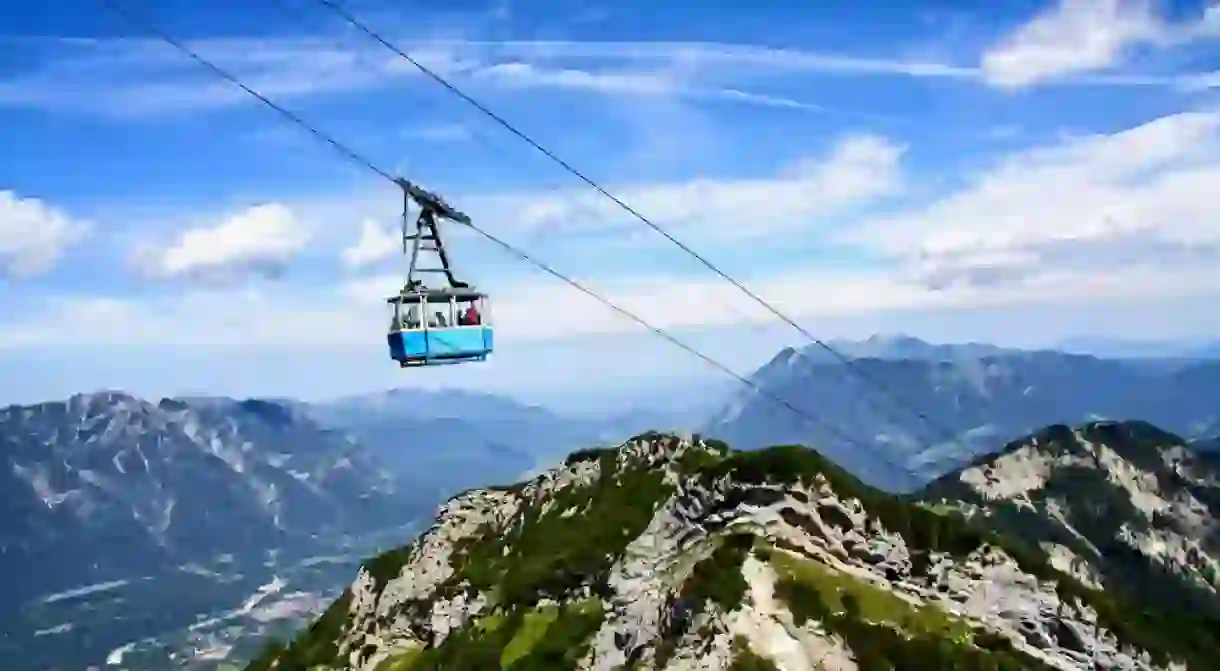The Top Things to See and Do in Garmisch-Partenkirchen, Germany

The Bavarian town of Garmisch-Partenkirchen is accustomed to rendering visitors speechless with its extraordinary beauty. It is best known for the highest peak in Germany, the Zugspitze, which towers over the rooftops. It is a much-loved ski resort that is also a paradise for summer sports fans and has all kinds of day trips on offer. Here is Culture Trip’s list of the best sights and activities in the region for a perfect holiday in Garmish-Partenkirchen.
Zugspitze
Natural Feature

The highest peak in Germany (and a fascinating glacier) is reason enough in itself to visit Garmisch-Partenkirchen. A cogwheel train and a cable car take you on an unforgettable scenic journey to the summit, where you look out over 400 snow-clad peaks spread across four countries. A popular winter and summer sports destination, the Zugspitze has excellent conditions for skiing, tobogganing, snow and summer hiking, as well as paragliding and other sports.
Partnachklamm: The Partnach Gorge
Natural Feature
Gondola rides
Linderhof Palace
Building

Olympiaschanze
Museum
Michael Ende Kurpark
Park, Spa
Wetterstein mountains
Natural Feature
The Wetterstein range is shared by Garmisch-Partenkirchen and Mittenwald in Bavaria, as well as Seefeld and Ehrwald further south in Tyrol. The Zugspitze is the most famous peak among the line-up, but the mountains are all heavenly for climbers, trekkers and hikers. Even if you don’t consider yourself the sporty kind, a trip to Garmisch-Partenkirchen is worth it for the views of the magnificent towering flanks and summits from down below as you laze on a rug with a picnic.
Riessersee
Natural Feature
Riessersee is a superbly photogenic Alpine lake that became known to the world when it hosted the skating and ice hockey events during the 1936 Winter Olympics. It’s a small body of water flanked by the majestic Alps and dense vegetation. If you’re looking for a quiet, peaceful spot to have a picnic or a stroll in the midst of fabulous nature, this is it. A cafe on the bank of the lake takes care of hunger pangs, and, if you want to stay longer, there’s the popular Riessersee Hotel.
Eibsee
Natural Feature

Eibsee lies as still and as reflective as a mirror in the tranquil Alpine foothills of the Zugspitze. It is one of the most striking sights in the region; in fact, Germans agree unanimously that it is one of the most sensational lakes in Germany. Privately owned, Eibsee draws peace-seeking tourists with its crystal-clear, emerald-green water. It is an extremely popular spot for boating and picturesque hikes in the summer, as well as skiing and snowboarding when winter turns everything white.
AlpspiX
Hiking Trail
Berchtesgaden National Park
Park
Welcome to the Alps like you’ve never seen them before: a vast, 21,000ha (51,892-acre) swathe of rugged limestone peaks, looming over a gem-blue glacial lake. The best part? You’ll have it (mostly) to yourself. With the exception of the architectural glass box that is the National Park Centre, or the onsite rangers who take visitors on tours, you’re pretty much guaranteed to enjoy the jaw-dropping fairytale views of sparkling lakes, cloud-scraping peaks and a patchwork of Alpine pastures without another soul in sight. Keep your eyes peeled for golden eagles, horned ibex and many species of butterfly, which pollinate wild orchids.
Alpine coaster
Natural Feature
Skiing’s not the only way to get down the side of a mountain at speed. You can also take this hair-raising, self-controlled ride, which can reach speeds of up to 40kph (25mph) and looks like a cross between a rollercoaster and a toboggan. A 2.6km (1.6mi) track winds down the side of the Kolbensattel mountain on which two-seater carts sit ready for you to clamber aboard. Whizzing through patches of Alpine forest while taking in the magnificent views of the valley is an adrenaline ride you’ll want to do all over again as soon as you reach the bottom.
Garmisch Classic
Ski Resort
Formed of three formidable mountains – Hausberg, Kreuzeck and Alpspitze – this snow-loaded ski resort is a stunner. What’s more, it’s suitable for all levels of skiers. Families and those with less experience can get to grips with their technique on the mostly easy-to-moderate runs on the Hausberg. Meanwhile, more advanced skiers can pit themselves against the challenging red and black runs. Either way, you’ll be ready for a slope-side break come lunchtime, so slide into the ski hut Drehmöser 9, which has a superb à-la-carte restaurant; or, if you’d rather do informal, there’s the rustic Garmischer Haus next door.
Staffelsee
Natural Feature
Contained in the foothills of the Bavarian Alps, this is one of the most beautiful lakes in Germany. In wintertime, the trees that surround the shores are frosted white with snow; in autumn, everything is ablaze with red, gold and burnt-orange hues; but, arguably, the best time to visit the waters is between mid and late spring, when the water temperatures are picking up and blossoms are everywhere, including the little islands that dot the middle of the lake like living barges.
Alex Allen contributed additional reporting to this article.













